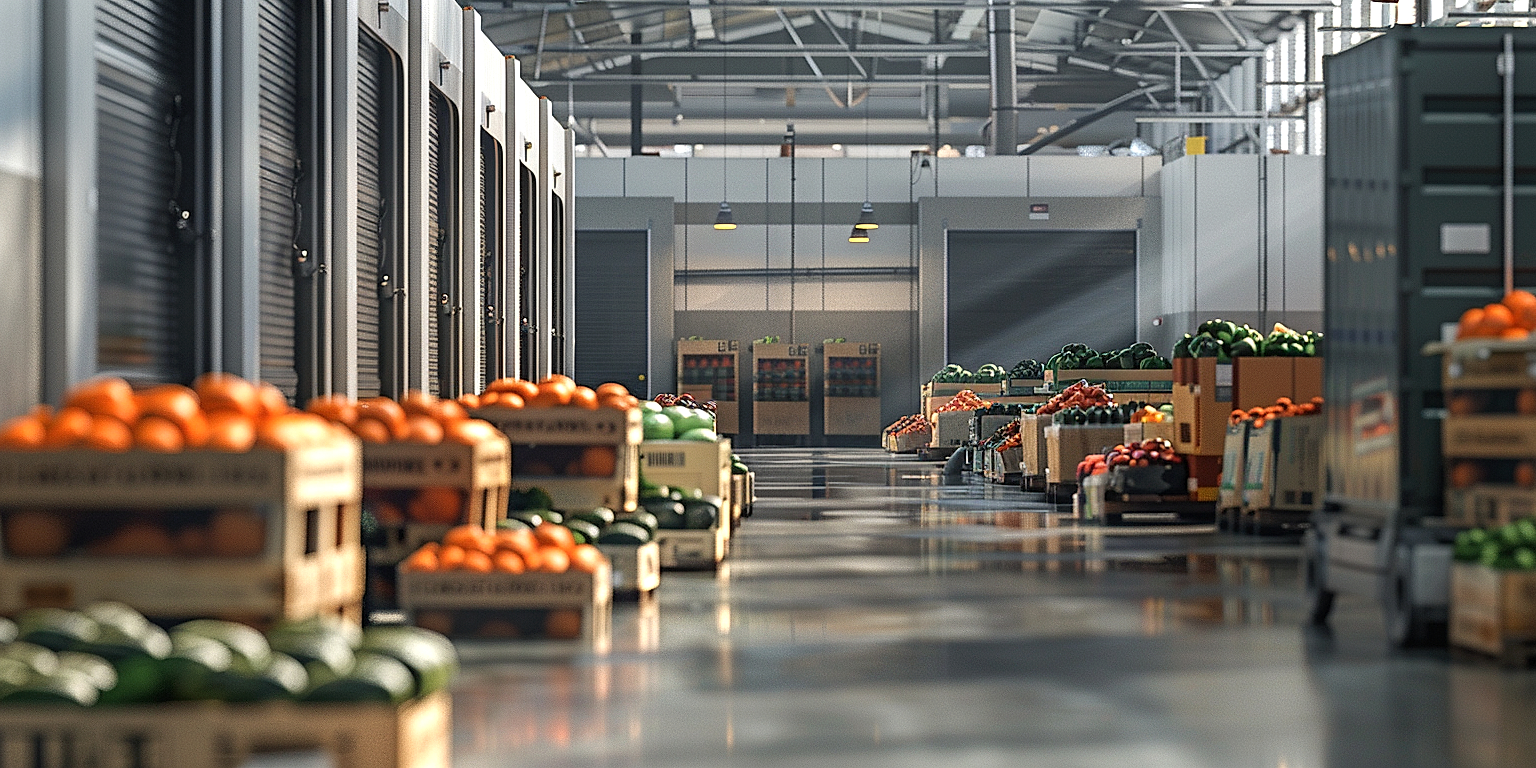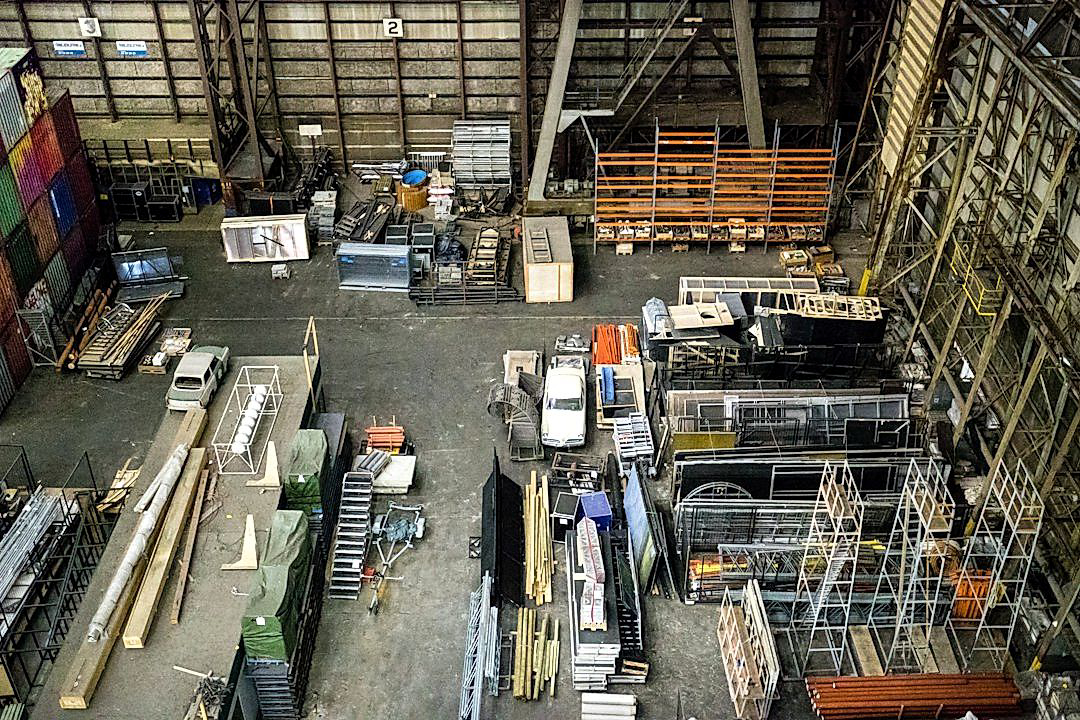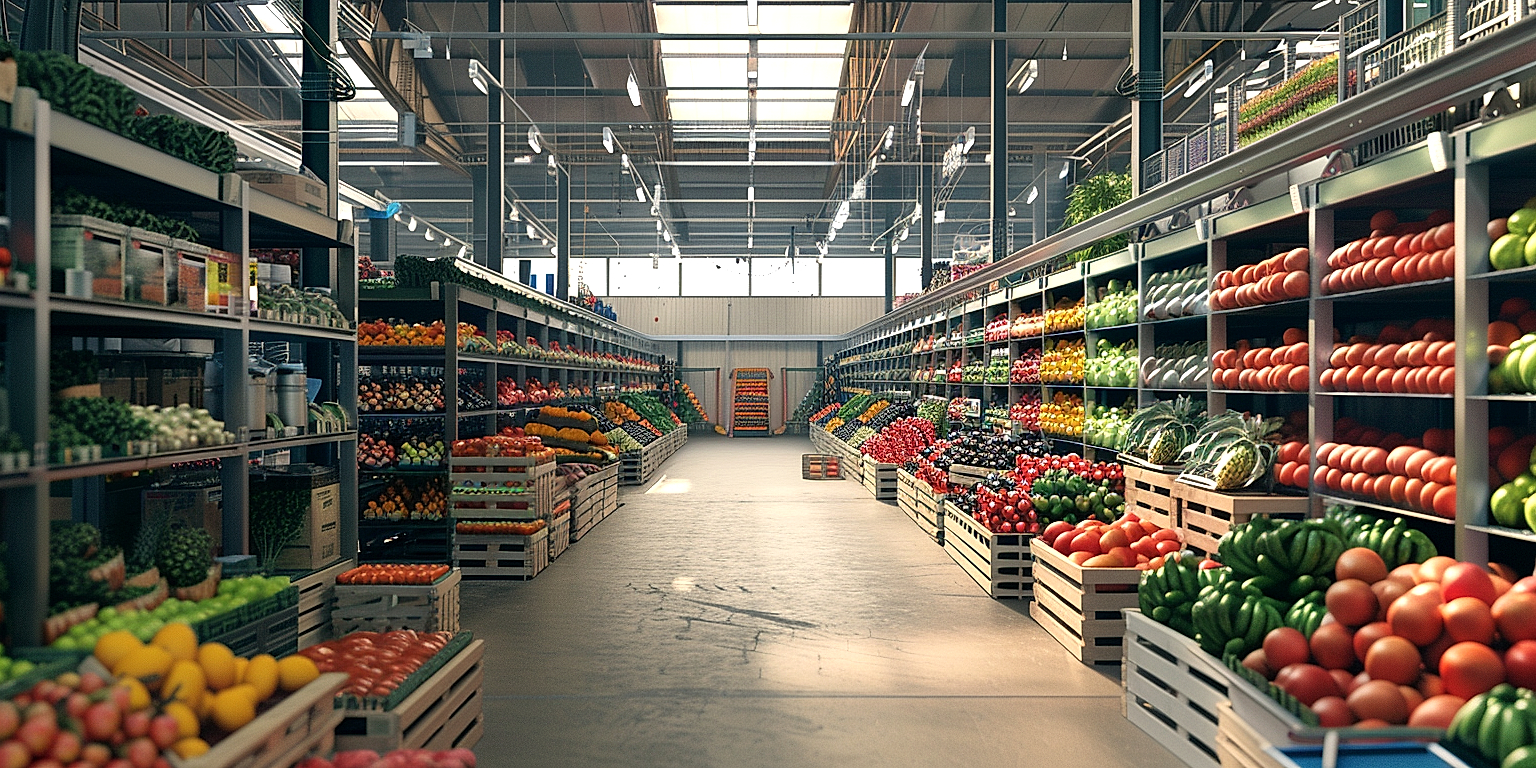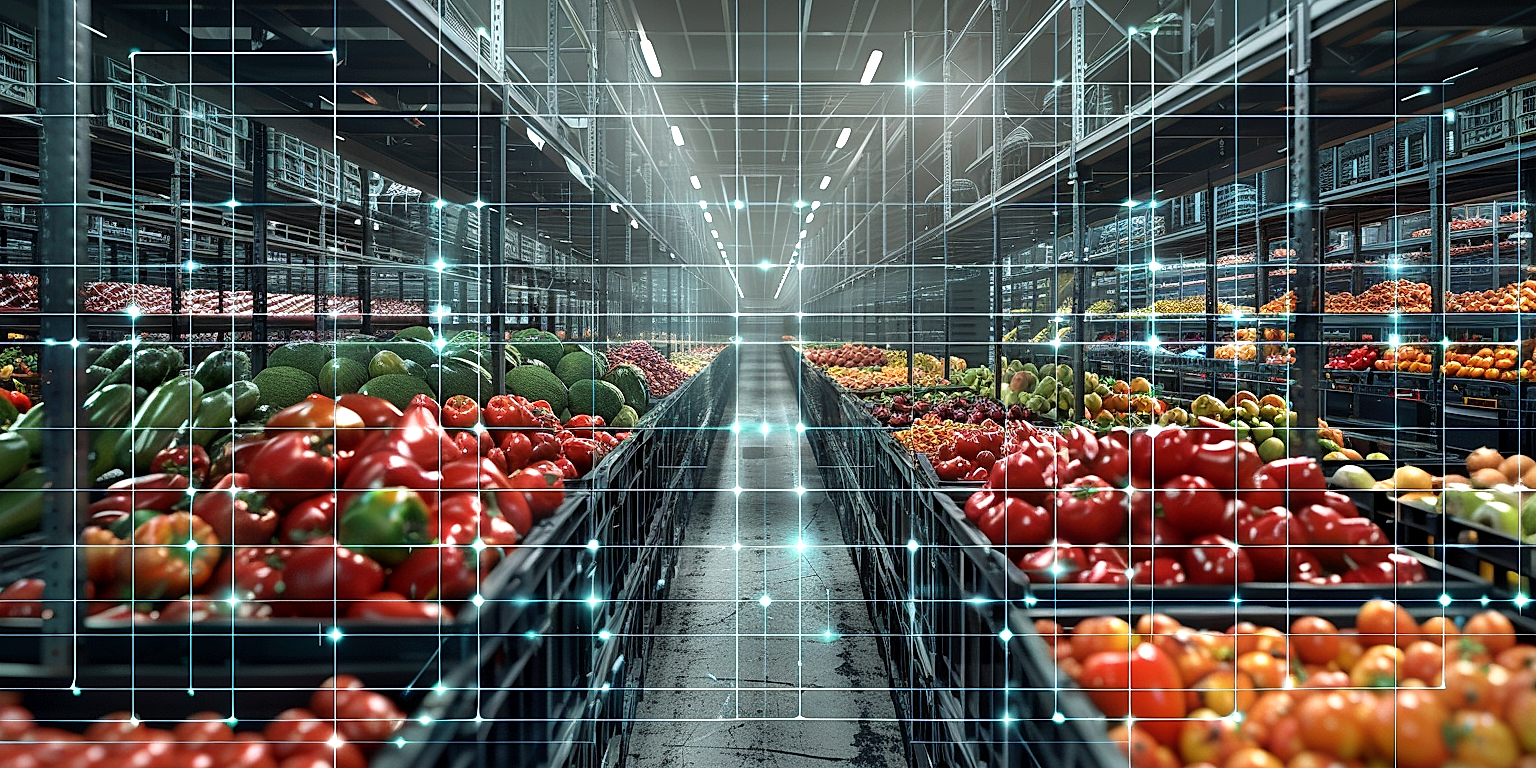The fast-paced world of food distribution relies heavily on the efficient and effective storage of perishable products.
As such, it has always been a challenge, bearing a significant impact on food security, distribution costs, and overall operational efficiency.
In the heart of this challenge lie innovative storage solutions, providing an answer to the industry’s escalating needs.
These solutions aim to revolutionize the ways we store and distribute our fresh produce.
This article explores in-depth, the plethora of developments and possibilities in this sphere.
From small-scale farmers to large-scale distribution chains, everyone stands to reap great benefits from these innovative solutions.
Contents
- Innovative Storage Solutions For Produce Distribution
- 1. Smart Cooling & Humidity Controlled Storage Units
- 2. Automated Vertical Indoor Farming Systems
- 3. Greenhouse Containers for On-the-Go Freshness
- 4. Solar-Powered Cold Storage Containers
- 5. AI-Powered Produce Sorting and Storage
- 6. Ethylene Absorption Pods for Longevity
- 7. Machine Learning Enhanced Storage Optimization
- The Bottom Line
Innovative Storage Solutions For Produce Distribution
1. Smart Cooling & Humidity Controlled Storage Units
Within the arena of produce distribution, the invention of Smart Cooling & Humidity Controlled Storage Units has brought a seismic change.
These technologically advanced storage units are designed to constantly monitor and adjust the temperature and humidity of the internal environment.
These units make use of cutting-edge sensors, along with smart thermostats, to ensure an optimal environment that preserves the freshness and increases the lifespan of different types of produce.
This innovation enables produce to be stored in ideal conditions which precisely mimic their natural storage environment, keeping them fresh for longer.
One of the essential features of these units is their superior energy efficiency.
The automated adjustment of temperature and humidity not only guarantees the freshness of the produce but also saves energy.
The storage units are specifically designed to maintain the quality of fresh produce, from fruits and vegetables to flowers and medicines, thereby minimising wastages and maximising profits in the produce distribution sector.
Additionally, these robust and advanced units help reduce the total carbon footprint, contributing significantly to the sustainable operation of the business.
The convenience of these units extends beyond just storage as they host intricate control systems which are incredibly user-friendly and easy to operate.
The advanced technology packed in these units offers the unique ability of remote control, enabling produce distributors to manage storage conditions seamlessly even when they are not on site.
Smart Cooling & Humidity Controlled Storage Units also have a fully automated diagnostic function, which detects any malfunctions and alerts the user instantly.
The automated diagnosis greatly reduces the risk of produce damage due to any sort of device failure, as it eliminates the need for constant manual checking.
These units, with their technologically advanced features and convenience factors, have brought about a genuine transformation in the produce distribution industry.
They have made it possible for fresh, high-quality produce to reach consumers even in the most remote locations, thus enhancing accessibility and contributing to a healthy lifestyle.
The technology driving these storage units is rapidly evolving and getting smarter, which provides incredible scope for future advancements in the field.
In essence, Smart Cooling & Humidity Controlled Storage Units are going to remain crucial in the foreseeable future of produce distribution, providing viable and sustainable storage solutions.
2. Automated Vertical Indoor Farming Systems
As we delve into the innovative world of fresh produce storage, it’s practically impossible to overlook the growth and potential of Automated Vertical Indoor Farming Systems.
An ideal solution for dealing with limited outdoor space or challenging climate conditions, these systems allow for year-round cultivation of a variety of crops.
Unlike conventional farming methods, these systems utilize vertically stacked layers to grow plants, making efficient use of available space, both horizontally and vertically.
This type of farming is not only space-saving but also allows for precision-controlled growing conditions, including lighting, temperature, and nutrients, leading to optimal produce quality.
Additionally, automation technology in such systems aids in streamlining the cultivation process, minimizing human intervention and thus reducing chances of contamination and lowering labor costs.
The agricultural produce grown in vertical farms is typically consistent in its quality, taste, and nutritional value as it is not susceptible to fluctuations in weather or soil conditions.
Thus, automated vertical indoor farming systems represent a milestone in innovative agricultural methods, boosting produce yield and consistency while allowing for year-round cultivation.
One significant benefit of these systems is that they can be installed virtually anywhere, making it possible to cultivate crops in urban environments where space is at a premium.
Moreover, this cultivation method drastically reduces the need for long-distance transportation usually required to distribute produce, hence cutting down on storage-related problems and overall costs.
Notably, these farming systems also incorporate the principles of sustainable agriculture, as they use less water, less land, and no pesticides, thereby reducing the carbon footprint typically associated with traditional farming.
Thus, the advent of automated vertical indoor farming systems presents an exciting opportunity for farmers, distributors, consumers, and indeed, our planet at large.
While implementation costs may be considered high, the long-term savings in terms of resource efficiency, crop yield, and quality are undeniable.
That said, continuous advancements in automation and vertical farming technology promise to make these systems increasingly accessible and cost-effective in the years to come.
Considering all these factors, Automated Vertical Indoor Farming Systems stand out as a promising solution, contributing significantly to the continuous evolution of innovative storage solutions for produce distribution.
3. Greenhouse Containers for On-the-Go Freshness
Standing at the frontier of produce storage and distribution innovation, are the greenhouse containers.
These revolutionary containers are not just storage units, but essentially mobile greenhouses, that preserve and even enhance the freshness and quality of produce on the go.
Greenhouse containers represent a noteworthy shift from basic storage to dynamic in-transit farming.
They utilize sophisticated technology to monitor and control the environmental conditions within the container, ensuring ideal conditions for the stored products.
Temperature, humidity, and sunlight exposure can all be manipulated to ensure that the harvested produce continues to thrive within the container.
This innovative approach significantly extends the shelf life of produce and allows it to be transported further without risking decay.
By being able to control the environment of the container, it becomes possible to create the perfect conditions for different types of produce, meaning that all kinds of fruits and vegetables can benefit from this system.
Moreover, these containers are also designed to be energy-efficient, using solar power to run the climate control systems.
Although this technology is still in its early stages, such containers hold great promise for the future of produce distribution.
They can virtually eliminate waste, reduce the carbon footprint, and even allow for local distribution of exotic produce, that was previously only accessible via long-distance import.
Greenhouse containers also provide an effective solution to the challenge of transporting organic and highly perishable produce over long distances.
Through this container technology, consumers can be assured that their produce is truly farm-fresh, regardless of where it was cultivated.
For farmers, it provides a means of cutting down on post-harvest losses while being able to tap into far-off markets.
The potential impact of greenhouse containers on the global food supply chain cannot be understated given the current pressing challenges of food insecurity and produce waste.
To that point, it is evident that greenhouse containers for on-the-go freshness are more than just a novelty; they are potentially a transformative force in the world of produce distribution.
4. Solar-Powered Cold Storage Containers
The recent advent of solar-powered cold storage containers has revolutionized the landscape of produce distribution.
These containers utilize renewable energy sources, thus making them an eco-friendly solution for produce storage.
The core advantage of adopting solar-powered cold storage containers lies in their independency from the conventional electricity grid.
This feature makes them an ideal solution for remote areas where electrical infrastructure may be inadequate or non-existent.
One of the main aspects that set them apart from traditional cold storage facilities is their flexibility and portability.
With these solar-powered units, a constant and controlled cold environment can be maintained virtually anywhere ensuring the optimum quality of stored produce.
Not only do they reduce the carbon footprint, but they also significantly lower operational costs by minimizing energy expenditures.
Furthermore, the advanced thermal insulation technology used in these containers enables efficient temperature regulation, leading to less energy consumption and even more savings.
In the event of an emergency or disaster, these containers can serve as an indispensable resource for maintaining the cold chain and minimizing food loss.
High-end solar-powered cold storage containers come equipped with real-time temperature monitoring systems to guarantee the perfect storage environment for the produce.
More so, some of these systems offer remote control capabilities, thereby providing operators with the ability to adjust the storage conditions from anywhere.
The solar panels used in these setups are typically high-efficiency and have a long lifespan, ensuring that the containers have an extended operating lifetime with minimal maintenance.
The solar-powered cold storage containers are often designed to operate under harsh environmental conditions, thereby enhancing their reliability.
Innovations are underway to equip these containers with sophisticated technology to capture excess solar energy for use in non-sunny periods.
Moreover, several agricultural businesses have started adopting these solar-powered setups to improve commodity quality, reduce post-harvest losses, and boost sustainability.
Without a doubt, solar-powered cold storage containers have immense potential to bring significant advancements and sustainability in the realm of produce distribution.
5. AI-Powered Produce Sorting and Storage
The concept of AI-powered produce sorting and storage is a revolutionary development in the field of produce distribution.
This innovative technology incorporates artificial intelligence (AI) to optimize the efficiency of sorting and storing agricultural produce.
By using various factors like size, color, and quality, these AI systems aid in sorting the produce with a high degree of accuracy.
The utilization of AI in produce distribution significantly reduces human error, increases efficiency, and ultimately enhances profit margins for businesses.
Produce can often present a complex set of challenges due to its inherent variability, however, AI-powered systems are up to par in managing these complexities.
Equipped with advanced machine learning algorithms and image recognition technology, these innovative storage solutions make precise decisions in a fraction of the time it would take for human involvement.
They can identify the smallest defects and sort the produce into different grades or categories with minimal waste.
As the technology learns and adapts over time, the process becomes even more efficient, thus, leading to reduced operational costs.
The AI systems also go a step further by ensuring optimum storage conditions for different types of produce to enhance shelf life.
Unlike traditional methods that sort and store all produce similarly, the AI storage solutions adjusts for different types of produce, considering their unique storage needs for optimum freshness.
Apart from sorting and storing, these systems can also manage inventory, thereby, providing a holistic solution for effective produce distribution.
Due to the use of AI, the system has the ability to track the quantity, location, and movement of stocked goods, which can prove to be a game-changer in inventory management.
Undoubtedly, the utilization of AI in create a smarter, more efficient method for sorting and storing can lead to a revolution in the produce distribution industry.
As we look towards the future, the role of artificial intelligence is set to grow exponentially, thus, redefining the way we address the efficiencies of the production cycle from farm to table.
6. Ethylene Absorption Pods for Longevity
As an innovative storage solution in produce distribution, ethylene absorption pods for longevity have gained significant attention.
This technology takes on the challenge of prolonging the shelf-life of fruits and vegetables during the distribution process by absorbing ethylene gas, a natural hormone produced by plants to stimulate their maturation and senescence.
These pods work by enslaving the ethylene-releasing process thereby delaying fruit ripening and deterioration, extending its freshness and usability.
It is common knowledge that as fruits and vegetables ripen, they release more ethylene thus speeding up the ripening process, a cycle perpetuated without intervention.
The introduction of this ethylene absorption technology in storage units disrupts this cycle, prolonging the freshness of produce despite an extended distribution frame.
These small pods, equipped with a potent ethylene absorption solution, are placed strategically within the storage rooms, be it ships, trucks, or warehouses, and actively absorb the ethylene out of the air.
This absorption then slows down the ripening process and prevents premature spoilage of the produce.
Ethylene absorbers have become one of the game-changers in the fresh produce supply chain, significantly reducing food waste and increasing food longevity.
What’s even more impressive about this innovation is that some of these pods come with an indicator that changes color when the absorption capacity has been exhausted, signaling it’s time to replace the pod.
This ensures that the produce isn’t exposed to ethylene unnecessarily as it can age them prematurely.
Ethylene absorption pods for longevity have undeniably revamped the storage scene.
They have made it possible to transport fresh produce across vast distances without losing its freshness or risking monstrous quantities of waste – a dream come true for long-haul shippers of fresh produce.
The evolution of these pods to become more effective, efficient, and environmentally friendly is a testament to the ingenuity of modern-day produce storage and distribution.
Food safety organizations globally have recognized these ethylene absorption pods as safe, effective, and a crucial player in the fight against food waste.
With responsiveness to modern-day challenges and a promise of a significant return on investment, ethylene absorption pods for longevity are a must-have in any innovative produce storage and distribution system.
7. Machine Learning Enhanced Storage Optimization
The sheer power of machine learning (ML) technology is transforming many industry sectors, including the produce distribution industry.
In this space, one of the most beneficial aspects of ML is the optimization of storage procedures and systems.
By programming software to find patterns in large amounts of data, ML opens up avenues for greater efficiency in the storage and distribution of produce.
When it comes to produce, timing and freshness are everything, and even the smallest optimization can make a major difference in the quality of the items being distributed.
In addition, by learning from past data, ML algorithms can predict future trends, such as demand fluctuations or seasonal changes, which can lead to more strategic storage decisions.
Machine learning allows for data-driven decision making, which eventually leads to the minimization of waste, reduction of costs, and an overall improvement in the quality of the produce.
Also, ML provides solutions for real-time processing and interpretation of the data accumulated from smart sensors in storage facilities that help monitor environmental conditions like temperature and humidity regularly.
Through real-time data tracking, ML solutions can dynamically adjust storage conditions, ensuring optimal freshness and minimizing the chance of spoilage.
ML also lends its power to the inventory management side of storage, managing products’ shelf life more efficiently.
Furthermore, ML can be used to intelligently aggregate and interpret data on supply chain logistics, helping to ensure efficiency and delivery punctuality.
The application of ML algorithms can drastically reduce human error and supply chain inefficiencies, leading to increased productivity and profitability.
From a business perspective, ML-enhanced storage optimization can lead to a competitive advantage in the market.
It enables more accurate sales forecasting, efficient ordering, and optimal product placement, which greatly increases the overall performance of the business.
In the context of a rapidly changing and technologically evolving business environment, it is no longer a question of whether machine learning has a place in storage optimization for produce distribution; instead, it is a fundamental necessity.
By leveraging the capabilities of machine learning in storage optimization, the produce distribution industry can enhance efficiency, maximize profit, and transform their operations to meet the demands of the 21st century.
The Bottom Line
Sentences.
Advancements in artificial intelligence, renewable energy, and indoor farming technology have revolutionized food storage and improved capacity to sustain product life span.
Solar-powered coolers, ethylene absorbing pods, and AI-influenced sorting and storage enhance efficiency and reduce waste, while greenhouse containers offer mobility not previously seen in the industry.
Smart storage units adjust both temperature and humidity, creating a customizable climate for specific products.
Furthermore, mass vertical farming in indoor automated facilities has dramatically transformed the farming industry, making accessibility and freshness of produce more reliable.
Thus, through the integration of these innovative technologies, the food storage and agriculture industry are poised for sustainable growth and longevity.




